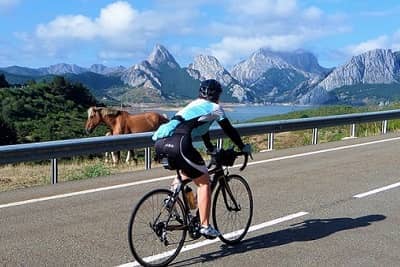Cruz de Hierro - The Highest Point on the Camino
Unlike Pico de Veleta, Angliru or Col du Tourmalet, the climb up to the Cruz de Hierro (Iron Cross) is not particularly challenging.
However, it is symbolically important as the highest point on the Camino Frances route of the Camino de Santiago.
Like many places along the Camino de Santiago, it has its own tradition and legends, which we will be looking at in this article. Given its impressive height, it also offers some fantastic views of the wild mountains and hillsides that are typical of the region.
The cross is situated around 3km after the village of Foncebadon, on the stage of the Camino between the towns of Astorga and Ponferrada. It is nearly 1,500m above sea level and comes just before a long descent into the village of Molinaseca, close to Ponferrada.
The route begins by climbing very gently from Astorga for 21km at an average of just 1%; this is very easy and you may not even realise that you are going up hill at all at this stage. The final 8km are slightly more challenging, with the gradient initially increasing to 3%, before the final 4.5km which average 6% gradient. This, however, is still comfortable and, provided that you choose the correct gear, you can spin the pedals with little difficulty.
The highest peak in the range - Teleno at 2183m can be seen almost all of the way from Astorga, on your left hand side. The landscape can be barren at times, but this kind of wilderness is also exciting. Much of it is relatively untouched by human development, making you feel closer to nature.
Other historians have suggested that the cross originates from Roman times, with the cross marking the border between territories.
Since the 11th century, however, the cross has been a key feature on the Camino de Santiago. Pilgrims traditionally carry a rock with them from the start of their journey, before leaving the rock at the foot of the cross. The rock symbolises the sins that the pilgrim has committed, and the act of leaving the rock is supposed to absolve them of the sins.
The towns of Astorga and Ponferrada are certainly worth a visit. Astorga is known for its Episcopal Palace, designed by Antoni Gaudi, as well as a vast gothic cathedral. The town is also the place where chocolate was introduced from The Americas to Europe, and much artisan chocolate is still produced here.
Ponferrada is dominated by the Knights Templar Castle which overlooks the river on the entrance to the town. Alongside the well maintained castle, there is also a bustling old quarter, packed with lively restaurants offering a range of Leonese and Galician cuisine.
The 'Bierzo' area surrounding Ponferrada is also wine country. The Denominacion de Origen wine that is produced here is darker and more fruity than Rioja - a more well known wine produced to the east - and which also lies along the Camino Frances!
Like many places along the Camino de Santiago, it has its own tradition and legends, which we will be looking at in this article. Given its impressive height, it also offers some fantastic views of the wild mountains and hillsides that are typical of the region.
The climb
Although the climb to the Iron Cross is one of the hardest on the Camino de Santiago, it is not, by road cycling standards, a difficult one.The cross is situated around 3km after the village of Foncebadon, on the stage of the Camino between the towns of Astorga and Ponferrada. It is nearly 1,500m above sea level and comes just before a long descent into the village of Molinaseca, close to Ponferrada.
The route begins by climbing very gently from Astorga for 21km at an average of just 1%; this is very easy and you may not even realise that you are going up hill at all at this stage. The final 8km are slightly more challenging, with the gradient initially increasing to 3%, before the final 4.5km which average 6% gradient. This, however, is still comfortable and, provided that you choose the correct gear, you can spin the pedals with little difficulty.
The Scenery
The Iron Cross is in the Montes de Leon (Leon Mountains), a range stretching across the provinces of Leon, Zamora and Lugo (Galicia) in the north of Spain. Both the climb up to the cross, and the descent into Molinaseca, offer fantastic views of the mountains, the highest peaks of which are snow capped for much of the year.The highest peak in the range - Teleno at 2183m can be seen almost all of the way from Astorga, on your left hand side. The landscape can be barren at times, but this kind of wilderness is also exciting. Much of it is relatively untouched by human development, making you feel closer to nature.
The Legend
There are several theories regarding the origin and symbolism of the cross. Among the more practical reasons, it has been claimed that the cross was erected to guide pilgrims on the Camino Frances - particularly in the winter months when the route can be obscured by snow.Other historians have suggested that the cross originates from Roman times, with the cross marking the border between territories.
Since the 11th century, however, the cross has been a key feature on the Camino de Santiago. Pilgrims traditionally carry a rock with them from the start of their journey, before leaving the rock at the foot of the cross. The rock symbolises the sins that the pilgrim has committed, and the act of leaving the rock is supposed to absolve them of the sins.
Camino de Santiago
The section of the Camino de Santiago either side of the Iron Cross is probably the most scenic and most interesting on the entire route of the Camino Frances.The towns of Astorga and Ponferrada are certainly worth a visit. Astorga is known for its Episcopal Palace, designed by Antoni Gaudi, as well as a vast gothic cathedral. The town is also the place where chocolate was introduced from The Americas to Europe, and much artisan chocolate is still produced here.
Ponferrada is dominated by the Knights Templar Castle which overlooks the river on the entrance to the town. Alongside the well maintained castle, there is also a bustling old quarter, packed with lively restaurants offering a range of Leonese and Galician cuisine.
The 'Bierzo' area surrounding Ponferrada is also wine country. The Denominacion de Origen wine that is produced here is darker and more fruity than Rioja - a more well known wine produced to the east - and which also lies along the Camino Frances!
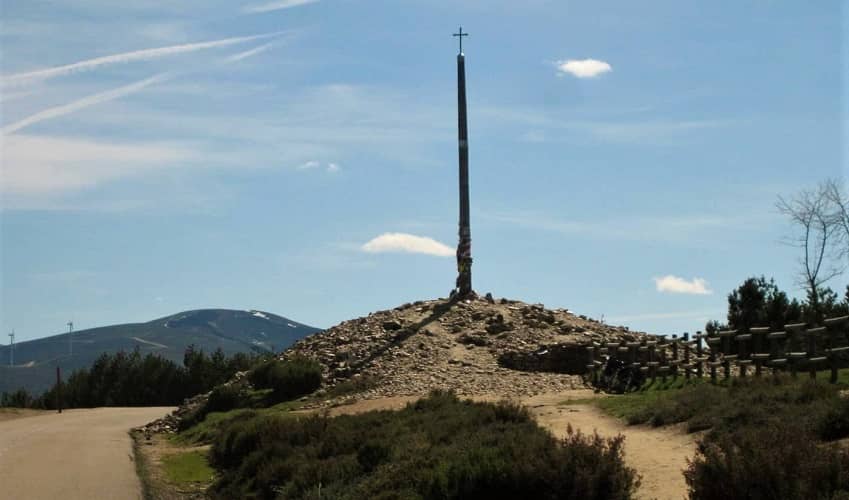
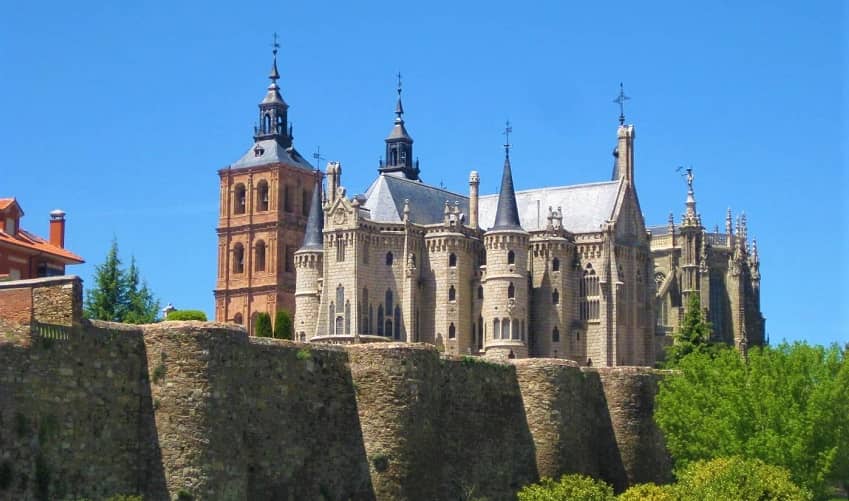
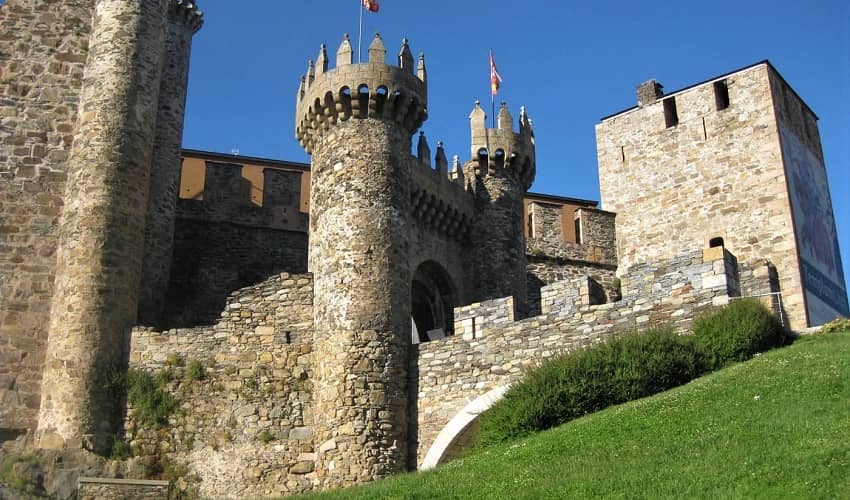
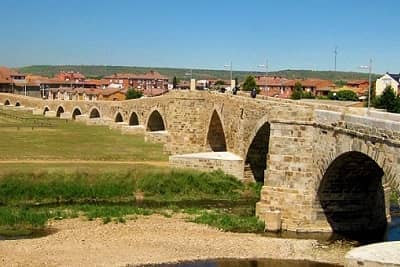
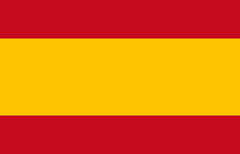 Spain
Spain
